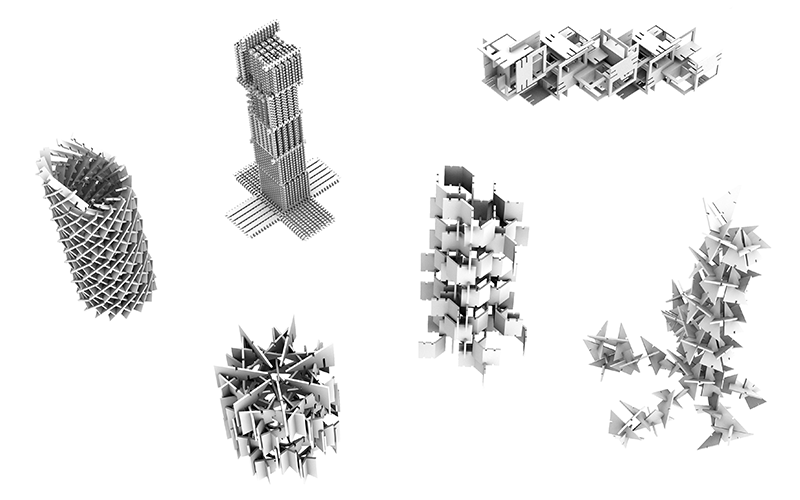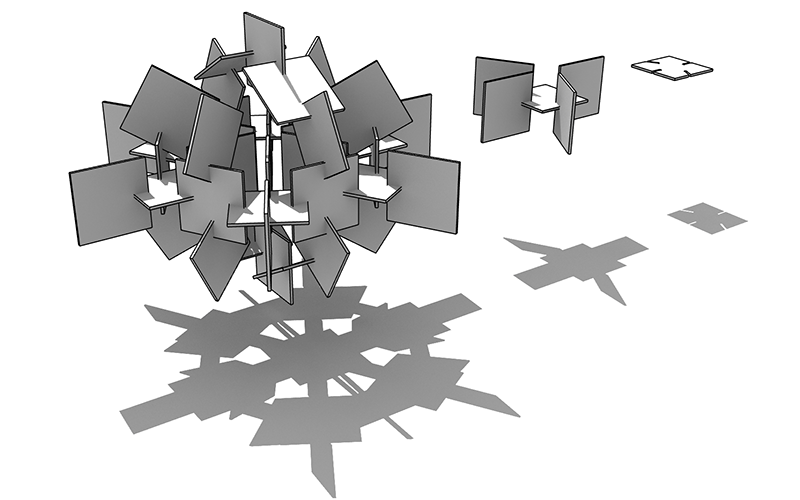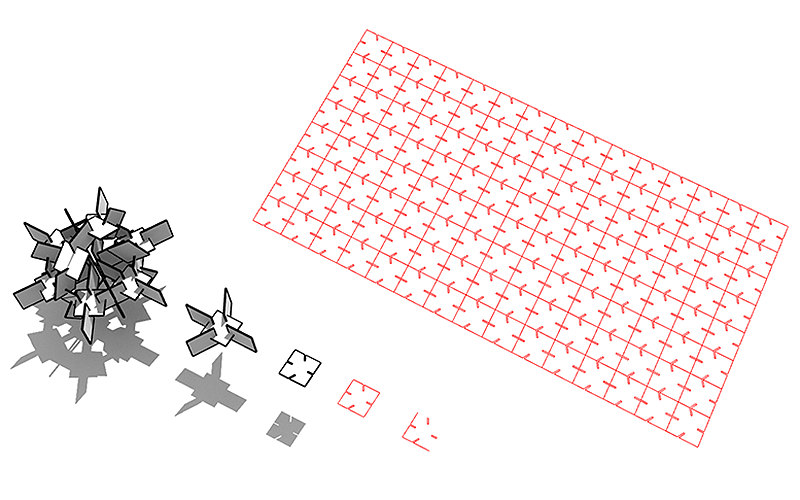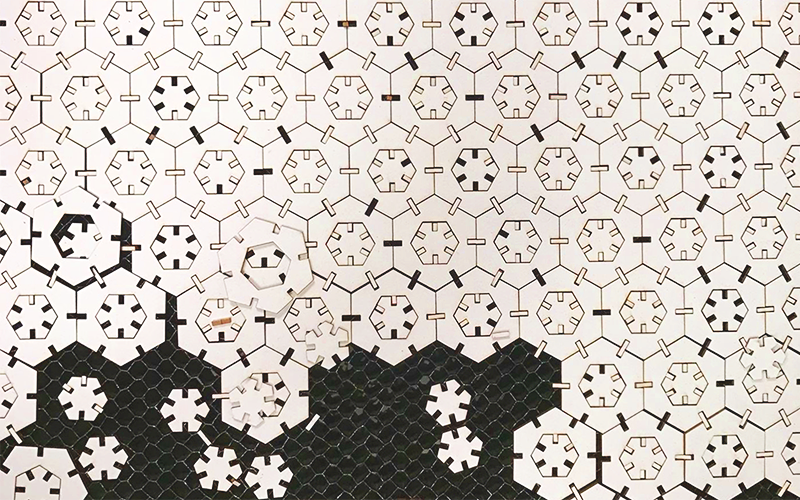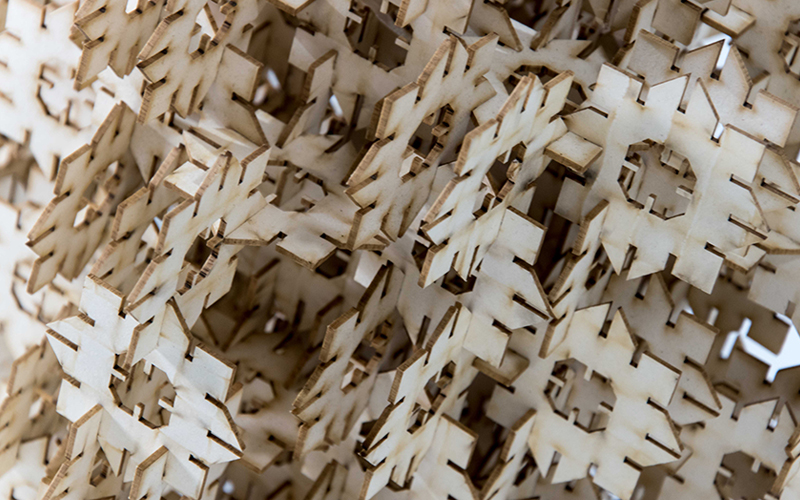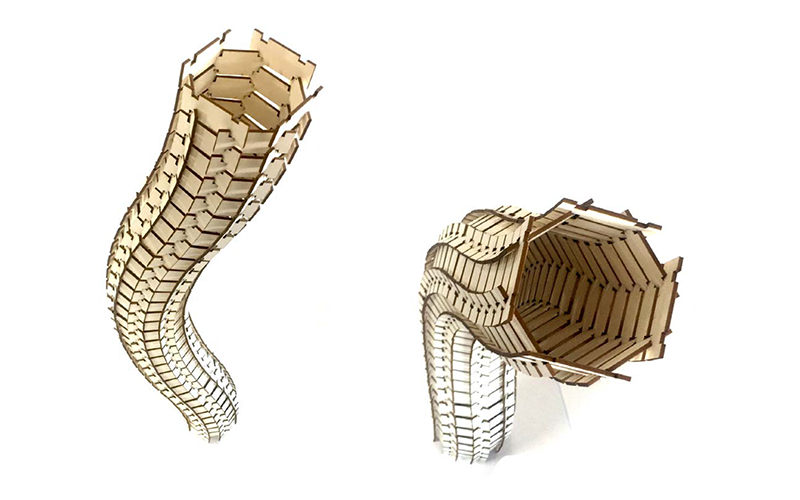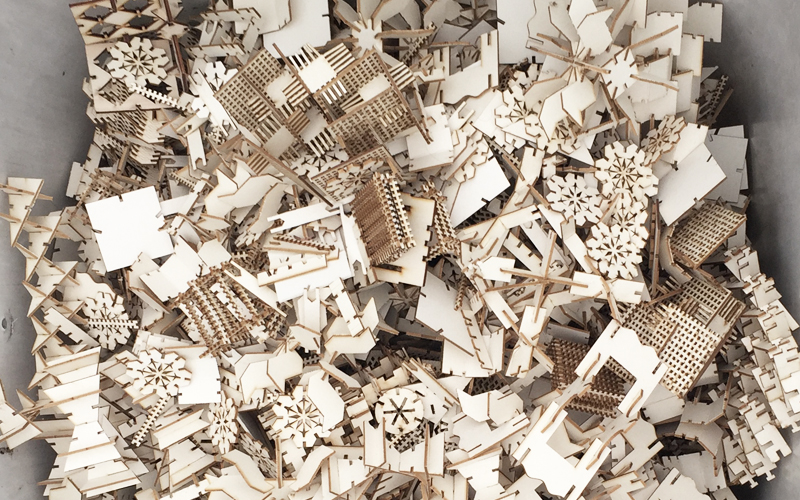- 3D-Modeling
- Bachelor
- Cologne
- Digital Fabrication
- Laser Cutter
- Milan
Through the integration of digital fabrication tools in actual design and production processes, the boundaries between design development and production become increasingly blurred. In contrast to a concept of hierarchical design development in this environment the design development process is driven by the process of making: thinking by making. After the era of industrial production, the possibilities created by computer-aided design and manufacturing revive some fundamental principles of traditional crafts and inevitably lead to new design aesthetics. The course explores this potential through the processing of digital designs into physical objects.
Digitally controlled laser cutters allow for an apparently easy fabrication of individual cutting patterns, based on 2D-drawings. Unlike the first exercise this design task was based on an additive digital design principle and a subtractive fabrication method. During the seminar the students explored the possibility of creating an intriguing spatial structure from interconnected planar modules. Only one module could be used to carry out a design that took into account not only the fabrication conditions, the given material properties and the constraints of the size of the module, but managed above all to result in an intriguing architectural and performative structure.
CREDITS
Daniel Polo, Giada Bevilacqua, He Yuan, Cindy Hens, Pietro Ciurlo, Olivia Daw, Andrea Colombo, Andrea Ferrerio, Maria Giardino, Mikael Svenson, Matteo Cavaglià, Sabrina Sgaramella, Daniel Favaro, Emiliano Berni
Marco Hemmerling, Alessio Mazzucchi
Politecnico di Milano
André Classen, Simon Berke, Elena Lang, Johann Hoerniss, Janik Lügtenaar, Patrick Jantzen, Marie-Theres Ley, Natalie Marek, Tom de Silva
Marco Hemmerling, Jens Böke
Faculty of Architecture, Cologne University of Applied Sciences

